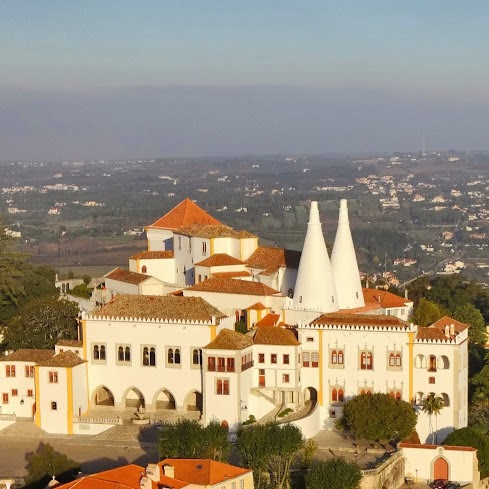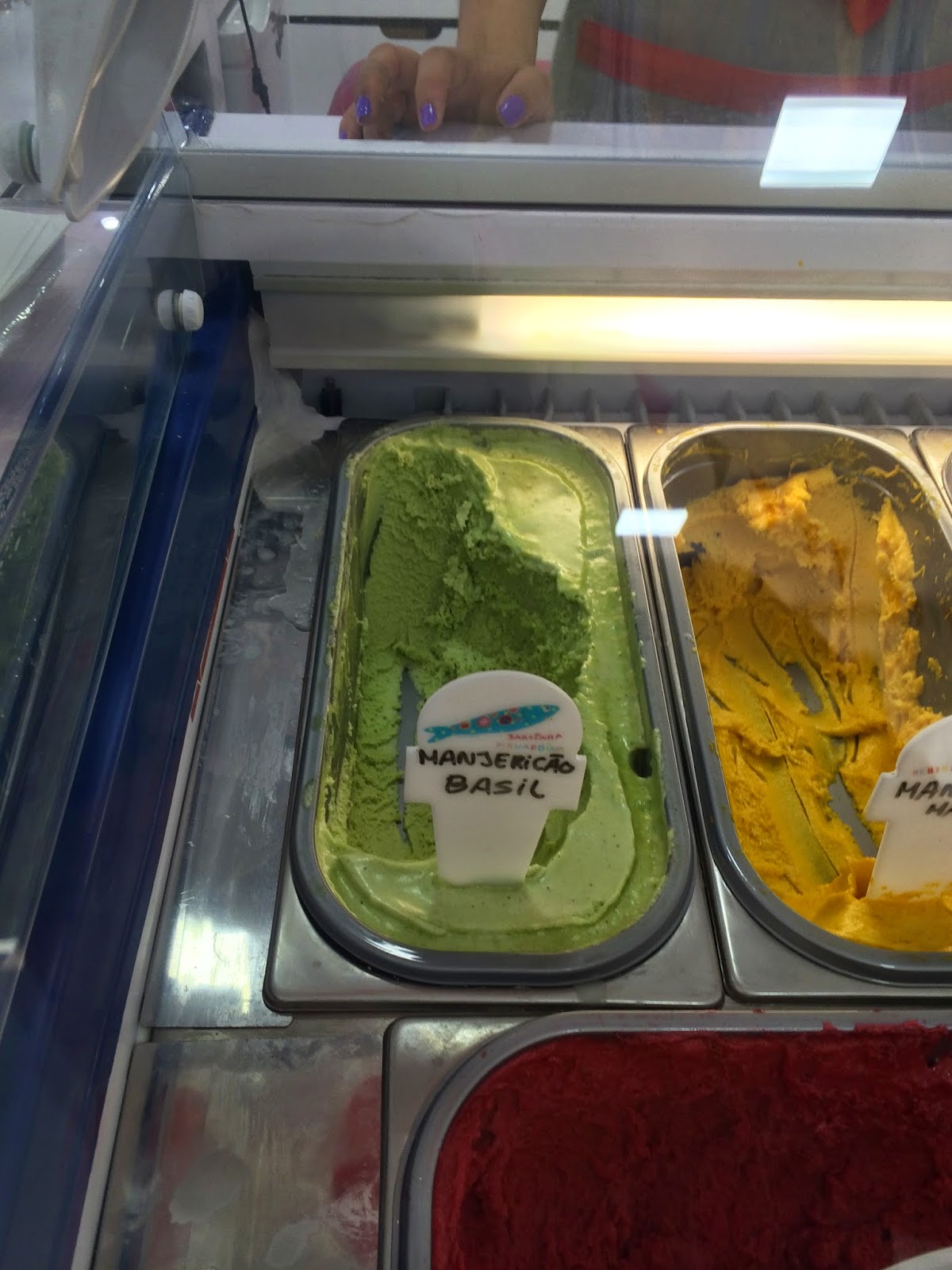Perhaps something was lost in translation when I ordered that decaf coffee last night. That would explain why I was up until 4 am. To my credit, I was still able to get up at 8 am, having only to give up the planned run in exchange for sleep. I grabbed a pastel de nata from the hotel breakfast buffet to go with my cup of science this morning. Still feeling a bit overcaffeinated (boy their beans are potent!), I chugged the latest news in drug discovery and disease targets instead. By lunch, I was raring to do something more active, and more pleasing to the eyes, which did not involve cyclic and aromatic chemical structures.
I'll take History for $100, Alex.
After (very) briefly listening to the screeching X factor auditions on the other side of the congress center, I walked westward on Avenida India to Mosteiro dos Jerónimos, conveniently located ~1.5 miles from the congress center - an easy, peasy walk. Here's a picture of the entire building. Built in the 1500s, the monastery's ornate design draws crowd by the thousands each day. But it wasn't the structure that lured me to visit... I was trying to visit a person.


My memory of Philippine history did not begin with tribe Chieftains or the negritos, though in reality, it did. Perhaps they taught us Philippine history in grade school, but I just didn't pay attention. No. My memory of studying Philippine history began with Vasco de Gama. In high school, Ms. Arlene Canivel told the story of our country's history, beginning with the adventures of the Portuguese and Spanish explorers. Now, who can resist a good adventure hi-story? Not I. Possibly the most famous of all Portuguese explorers is Vasco da Gama, who led the 1497 expedition to India, in search of the Spice Island. Magellan, though born Portuguese, represented the Spanish side, and eventually landed in the Philippines in 1521. We even have a song about it! 350 years after his death in India, Vasco de Gama's remains were brought home to Portugal, to rest at the Jeronimos monastery in Lisbon. I would have wanted to see his tomb, but queue and time were against me, so I walked on. So close... but no dice. Not this time.
 I crossed the street to walk along the Tagus river, pronounced "Ta-ju".and to look at the Padrao dos Descobrimentos or Discoveries Monument, celebrating the worlds' explorers in stone. It features Vasco da Gama, Magellan, Cabral, among others, in a ship.
I crossed the street to walk along the Tagus river, pronounced "Ta-ju".and to look at the Padrao dos Descobrimentos or Discoveries Monument, celebrating the worlds' explorers in stone. It features Vasco da Gama, Magellan, Cabral, among others, in a ship.
I continued walking along the river to the famous Torre de Belem, a fortress built to protect Lisbon. I was starting to get hungry, and wanted to get something to grab-and-go, but this is not quite a food truck kind of town. There's no philly cheese steak cart, or NY knishes. Instead I see this:
 |
| Tempting, but not on an empty stomach at noon. |
I was hoping to climb up the tower, which supposedly offers a fantastic view of surrounding towns along the river, and to see the cannon niches, and dungeons. But again, I was out of luck. Check the line on that picture. I was still grateful that I got to see the fort though.

I'll take Recess for $1200, Alex.
Finally, I had to eat and go back to the conference. Dare I venture to Pasteis de Belem? A friend suggested that I try one of these pastels, but I was also warned by another that the line to get these is long. Since it was only going to take a few minutes detour, I decided to check the line. It was long, indeed. BUT, there's also a sign that they have table seating. As luck would have it, I had to wait only for 1 minute for a free table. I ordered pizza and "Kok Ze-ru", and the pastel de belem. When my server brought it, my reaction was "Oh." Why? Because it looks exactly like pastel de nata, which I just had for breakfast.
Scratching my head, I asked my server the difference between the two. He replied, "How do I explain this?... It's like Coke vs. Pepsi. It is the same, but not exactly. Pastel de Belem is a secret recipe, and is made only in this restaurant." He goes on, "We make 21,000 of these in 1 day."
Hmmm... after a bite, I knew what he meant, and appreciated the takeout line outside. I'm just glad that this did not fall in my "Almost" category.
I'll take Science for $2000, then move to Museums for $500.
Fado! My calendar beeps me that it's 4:45 pm, and the session has wrapped up. I discreetly walked out the building and hopped a cab to Museo do Fado in Alfama. But what is Fado? It is music, music about fate. Fado = Fate.
“Lisbon, the capital of Portugal. For centuries her ships sailed around the globe and brought to the European shores the first news of many unknown cultures in Africa, Asia and the Americas. In each returning ship there also came songs that spoke of the dangers of the voyage and of the fascination for the new worlds explored, full of exotic tunes and rhythms, but songs that also told of loneliness, homesickness and the fragility of mankind against the fury of the elements and the unpredictable nature of human faith. In the 1820s and 30s a new song was thus born in Lisbon, which was to become the very mirror of the multicultural identity of the city and of its people. It was called Fado, the same word that means fate in the Portuguese language.”
- from the application of Fado to UNESCO’s Representative List of Intangible Cultural Heritage of Humanity.
The museum was small enough that I was able to browse and appreciate the history behind this distinctly Portuguese music. Distinct just like bluegrass is distinctly southern US, and Kundiman are Philippine period serenade songs. With 15 minutes before museum hour closing, I decided to push my luck and walked to Fundacao Jose Saramago, the house where Blindness' author and Nobel prize winner, Jose Saramago lived until his death in 2010. And it's less than 5 minute walk from Museo do Fado. If they let me in, they couldn't possibly throw me out, right?
But wait, gelato!
I ventured in just to see if they happen to have lavender ice cream, which I fell in love with in Nice. They didn't. But they did have basil ice cream. I skeptically tried it, and have to say that it's... quite good. Not lavender good, but exotic and flavorful kind of good. I started to think about food you can pair it with. Coconut-based dishes? Strong-flavored fish dishes, for sure. Clearly, I was sidetracked and won't make the extra 10 meters to Fundacao Jose Saramago. It's probably closed anyway. My good friend "Almost" struck again.
I'll take Geography for $2000, Alex.
 |
Portas do Sol, doors of the sun. You always see the sun
as it rise in the East until it sets in the West. |
I started walking around and exploring, but this city is known for its 7 hills, and tiled street paths. My feet were no match, and I've already walked 22,000 steps today. Then, I saw a Tuk-Tuk parked and waiting. My coach has arrived.
Riding the Tuk-Tuk is not for the weak-hearted. It's like riding a thrilling amusement ride, which was fun for me. For those who plan to do this, I encourage you to wear the seatbelts. You will bounce. I am really glad that I took the Tuk-Tuk tour. (Yeah, that sounded funny.) My driver talked about history plus some from a local's point of view. She also took me to areas that are too narrow to navigate by cab, and too steep to enjoy on foot, and simply not known or highlighted in tour books. Much recommended.
 |
| calçada portuguesa |
 |
Miradouro da Senhora do Monte,
highest point in Lisbon. View of the castle, Castelo Sao Jorge. |
 |
Azulejo, glazed ceramic tiles that cover walls
of buildings initially to cover imperfection,
and separate one house from another.
Apparently, it helps in keeping tempearture in homes too. |
 |
National Pantheon, where Presidents, poets, and
famous Fado artist, Amalia Rodriguez is buried. |
Final Jeopardy: This is the last sentence from the book "Memorial do Convento" by Jose Saramago.
I spoke to my driver about how I just "almost" made it in to Fundacao Jose Saramago. She smiled, and drove me there, and explained that I didn't have to go in to pay respect to Jose Saramago. Upon his request, his ashes were scattered under an olive tree which was brought from his village, and replanted in front of his home by the river.
 |
| What is "but (it) did not ascend to the stars, for it belonged to the earth"? |

























































